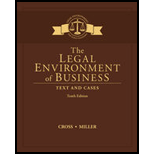
Case summary: Two people JK and MT were involved in a case in a Texas state court. Both of them alleged each other for fraud and misconduct to obtain the control of the company C. The person JK formed a company KR whose most of the shareholders were that of the company C. Meanwhile, he filed a petition for Chapter 7 liquidation in the bankruptcy court and failed to inform the court about his interest in the company KR. Though the person JK’s share belonging to that of the company C was passed to the bankruptcy trustee, he called a meeting of the shareholders of the company C in which the person MT was not included and voted those shares for removing the person MT from the board. The company C board then dismissed the company C’s claims against the person JK in the case with the person MT.
To find:The sufficient grounds for the bankruptcy court to dismiss the person JK’s bankruptcy petition.
Want to see the full answer?
Check out a sample textbook solution
Chapter 15 Solutions
Lms Integrated Mindtap Business Law, 1 Term (6 Months) Printed Access Card Cross/miller’s The Legal Environment Of Business: Text And Cases, 10th
- What is the predetermined overhead rate of this financial accounting question?arrow_forwardPlease need help with this general accounting question not use aiarrow_forwardWhat is a good example of a letter of recommendation for a 5th grade Language Arts Teaching Position at an elementary school from a school principal?arrow_forward
 BUSN 11 Introduction to Business Student EditionBusinessISBN:9781337407137Author:KellyPublisher:Cengage Learning
BUSN 11 Introduction to Business Student EditionBusinessISBN:9781337407137Author:KellyPublisher:Cengage Learning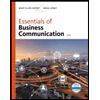 Essentials of Business Communication (MindTap Cou...BusinessISBN:9781337386494Author:Mary Ellen Guffey, Dana LoewyPublisher:Cengage Learning
Essentials of Business Communication (MindTap Cou...BusinessISBN:9781337386494Author:Mary Ellen Guffey, Dana LoewyPublisher:Cengage Learning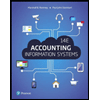 Accounting Information Systems (14th Edition)BusinessISBN:9780134474021Author:Marshall B. Romney, Paul J. SteinbartPublisher:PEARSON
Accounting Information Systems (14th Edition)BusinessISBN:9780134474021Author:Marshall B. Romney, Paul J. SteinbartPublisher:PEARSON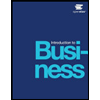
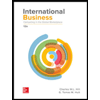 International Business: Competing in the Global M...BusinessISBN:9781259929441Author:Charles W. L. Hill Dr, G. Tomas M. HultPublisher:McGraw-Hill Education
International Business: Competing in the Global M...BusinessISBN:9781259929441Author:Charles W. L. Hill Dr, G. Tomas M. HultPublisher:McGraw-Hill Education





